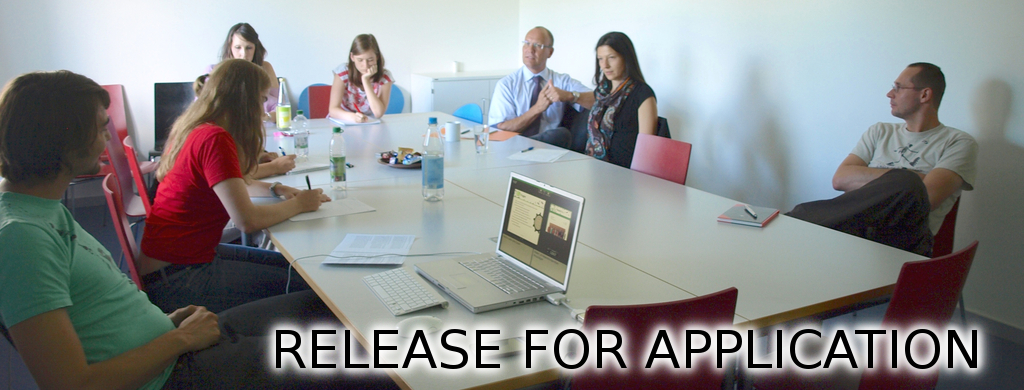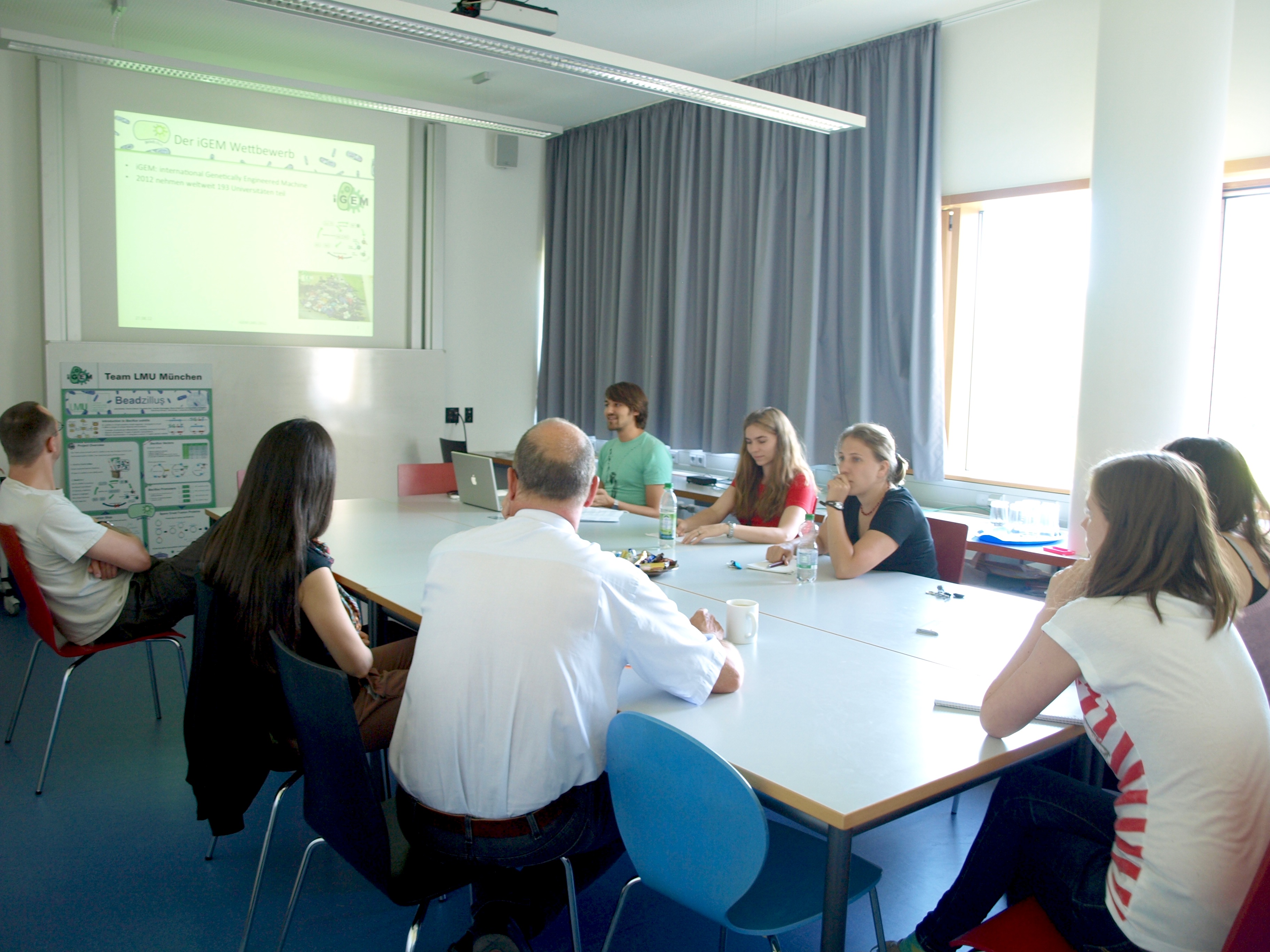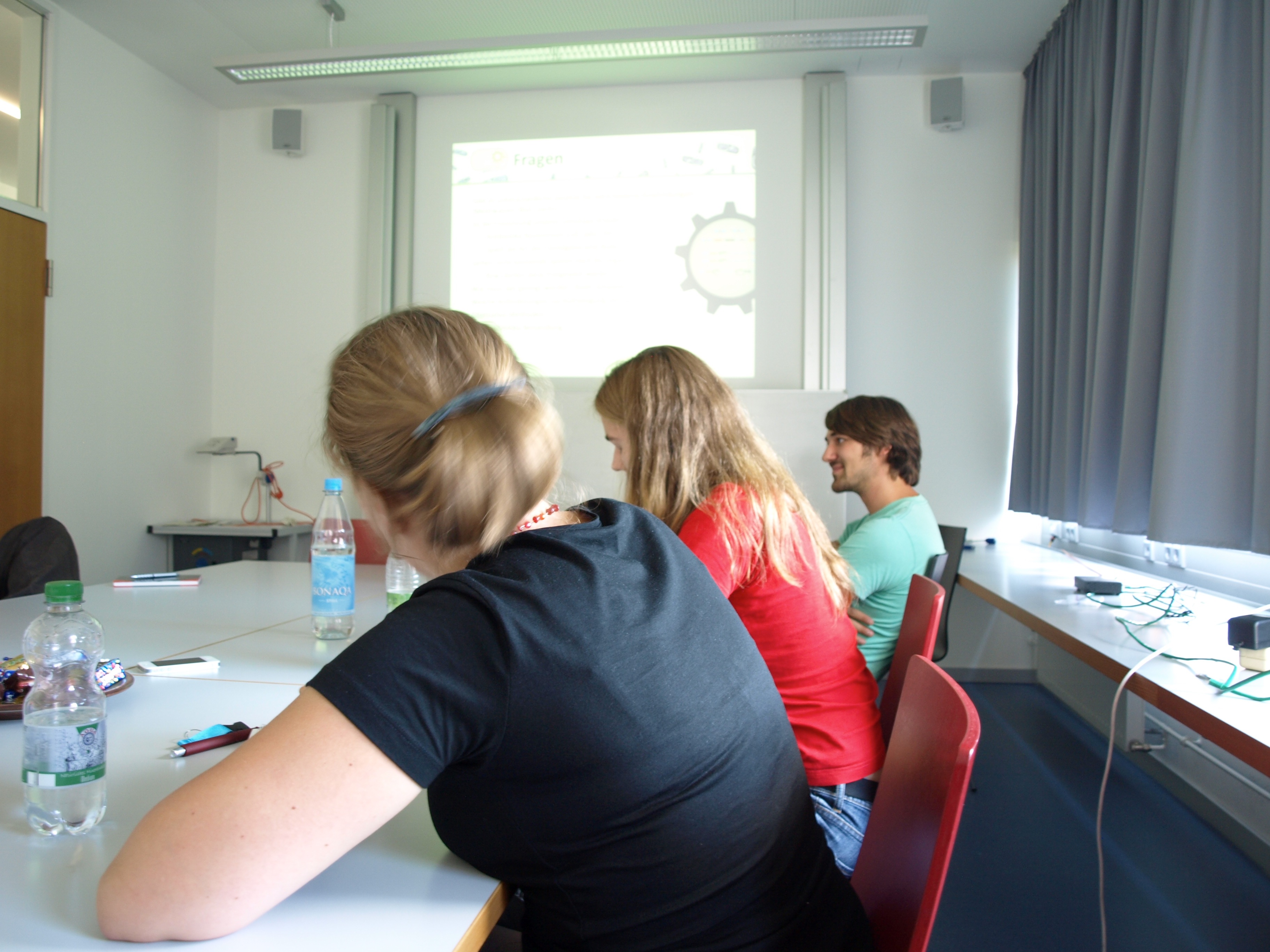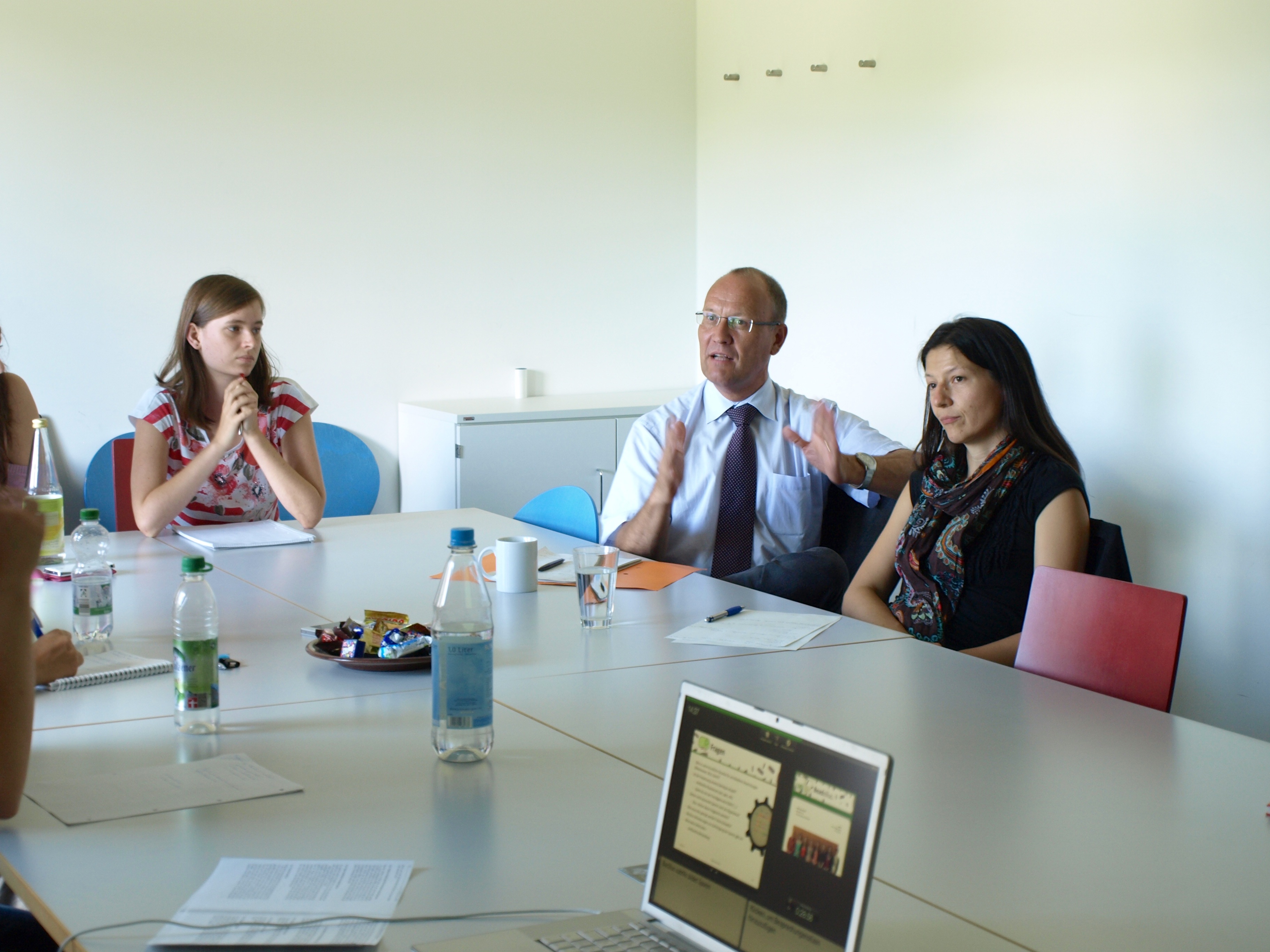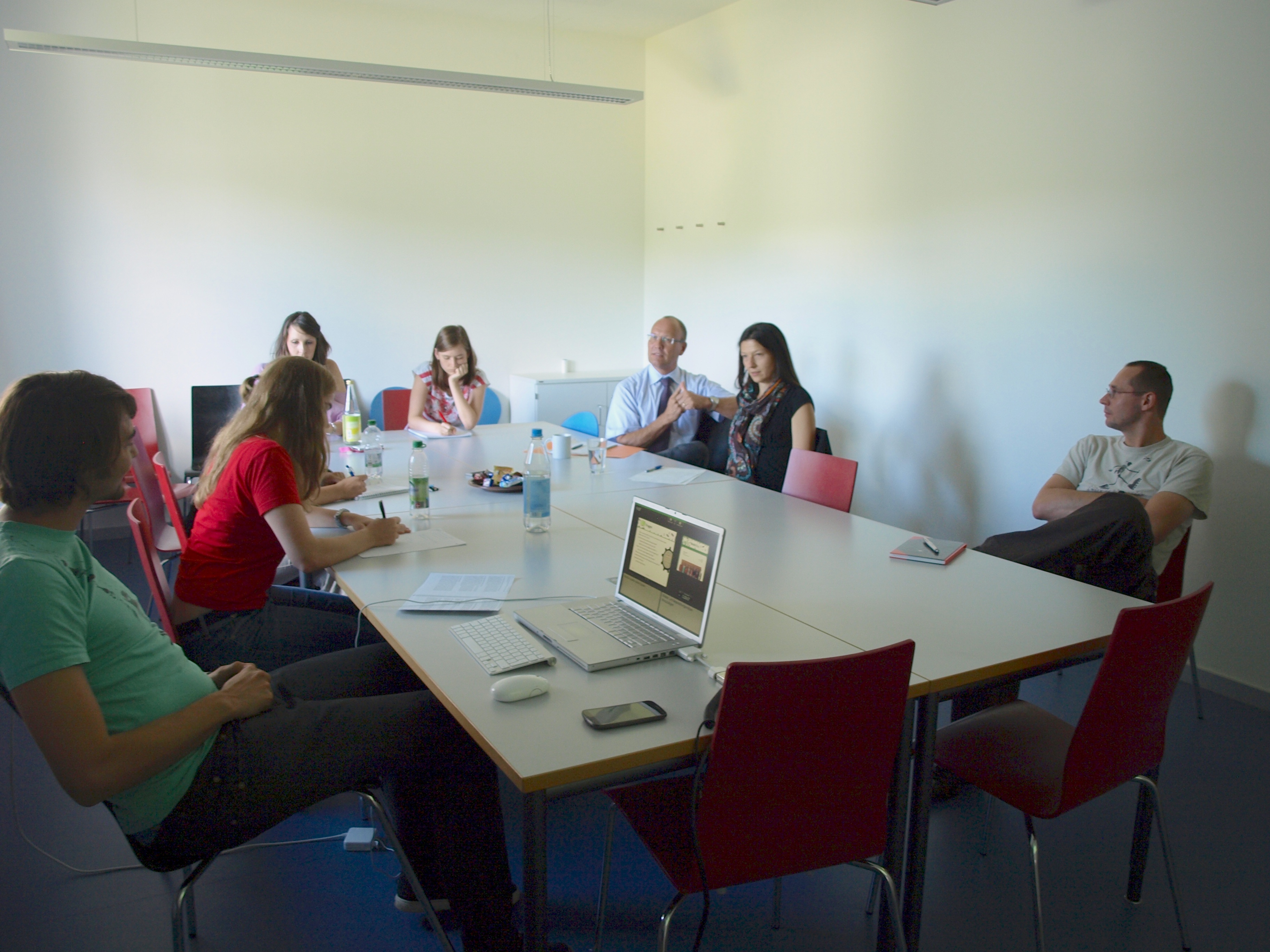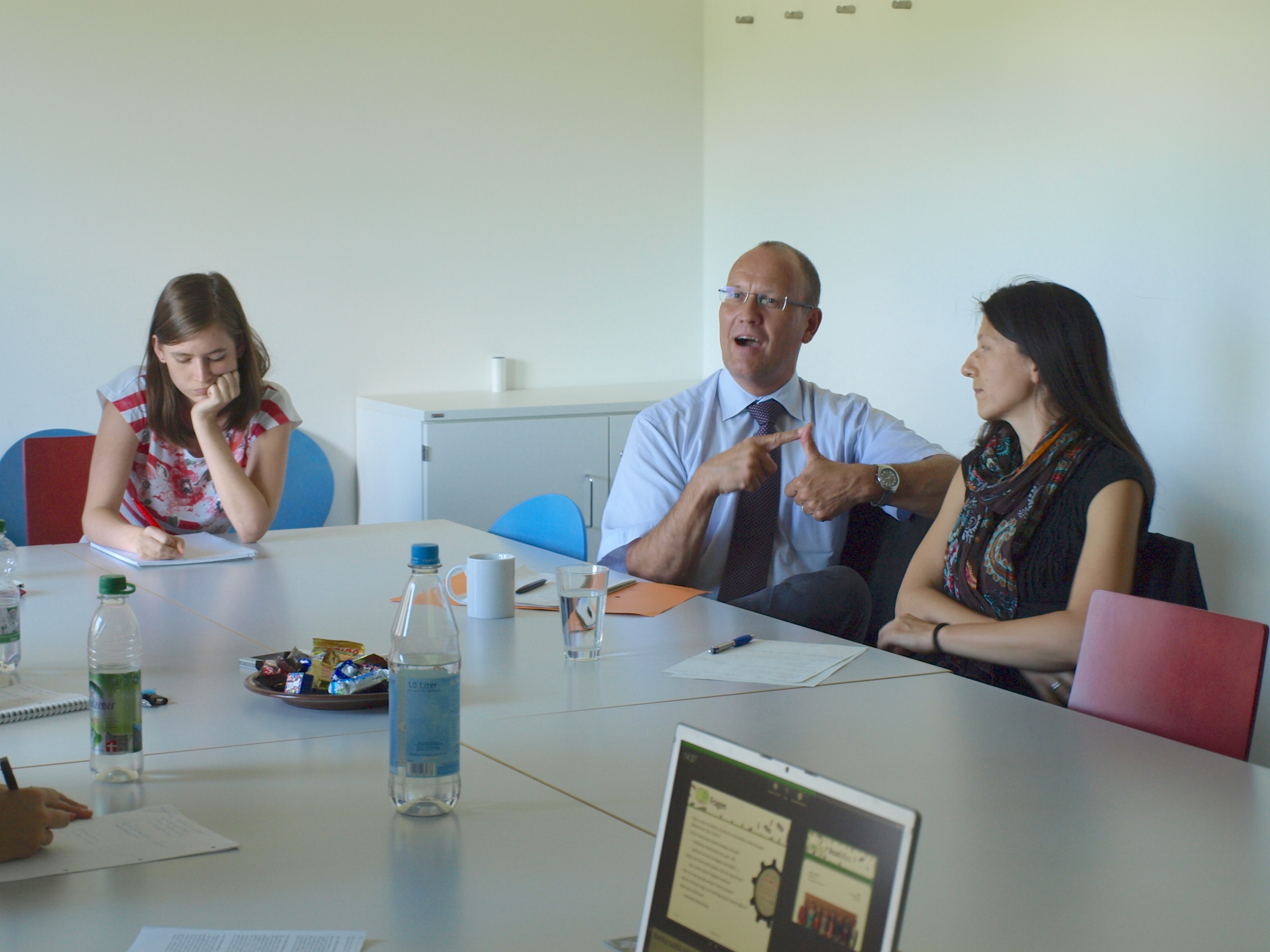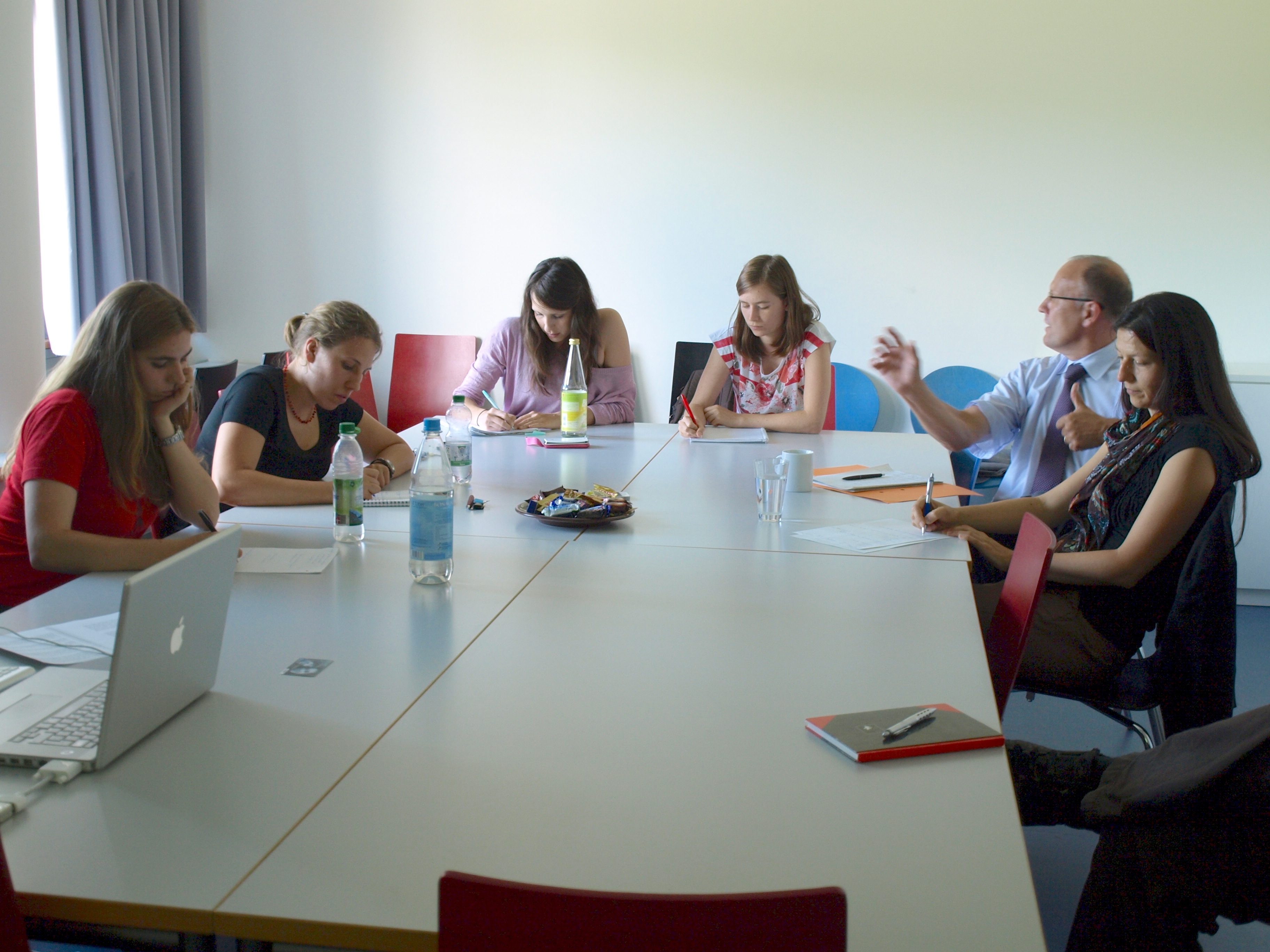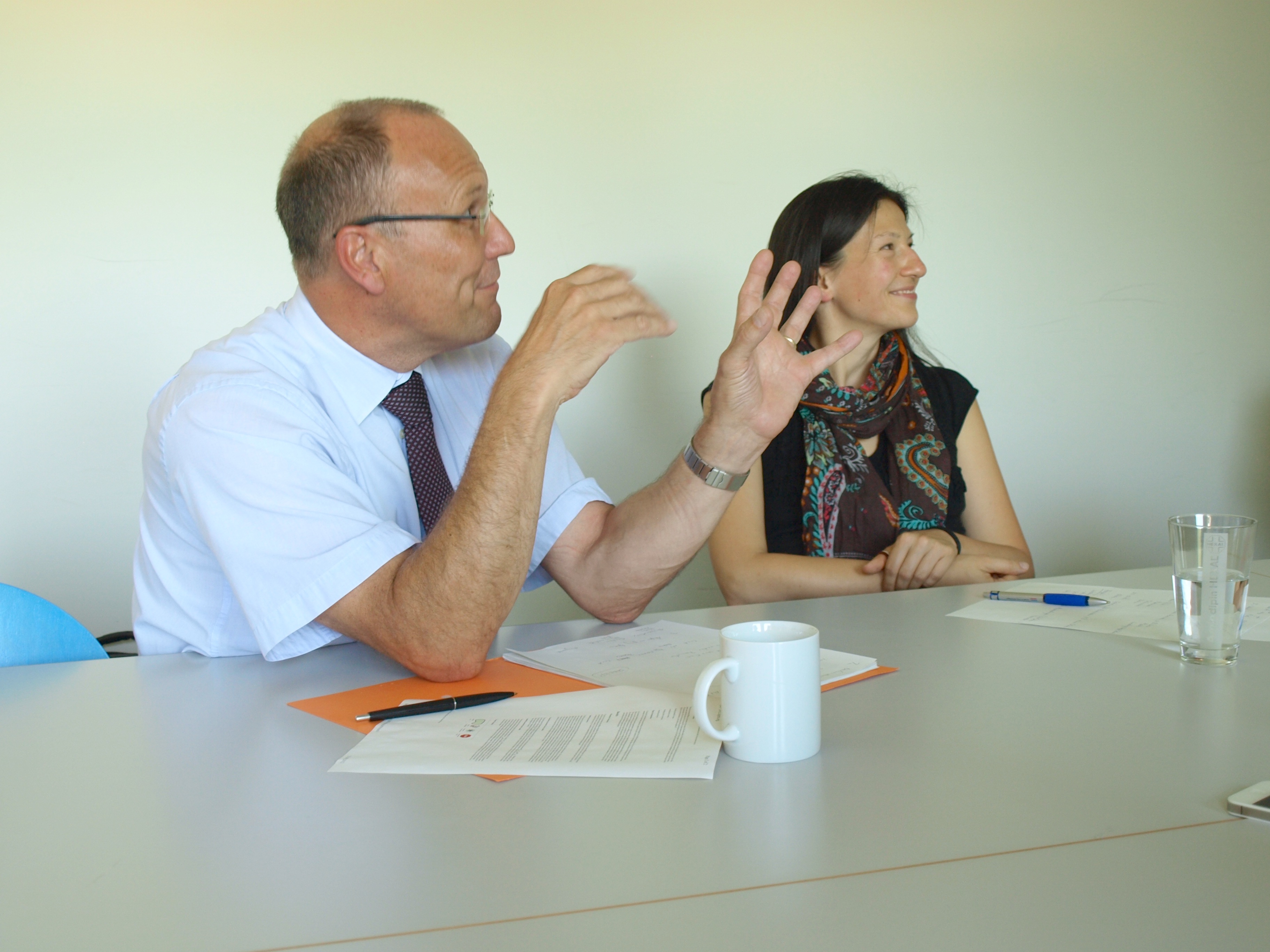Team:LMU-Munich/Project Safety

The LMU-Munich team is exuberantly happy about the great success at the World Championship Jamboree in Boston. Our project Beadzillus finished 4th and won the prize for the "Best Wiki" (with Slovenia) and "Best New Application Project".
[ more news ]

Release of our spores for application
One aspect of our spores is the idea, that the spores are not able to germinate (details about GerminationSTOP here). That has the simple technical reason that the fusion proteins would lose their function if the spore were to become a vegetative cell. But also it means that our Sporobeads are no longer viable cells.
We have a lot of ideas what to do with our spores, but how realistic is it?
Is it enough to show it in our lab that the spores are not able to germinate? What are the official requirements?
In order to get a professional statement about the safety aspects of our project and how realistic it would be to release our spores in the environment, we invited the Commissioner for Bio-Safety in Bavaria to speak with us.
In a two hour discussion, we explained the details of our projects and asked the Commissioner all of the "what ifs" on our minds. Most of the applications with our spores that we discussed dealt with the filtration or degradation of molecules in water, blood or the human gut.
What regulations, laws or aspects would we need to keep in mind:
- during construction of our Sporobeads ... (antibiotic resistances, toxins,...)?
- during purification of our Sporobeads?
- Which laws apply for which application?
- Is our Sporobead a GMO?
Here is our summary of the meeting:
In any type of genetic modification project, there are many safety considerations to keep in mind. We were interested in the legal safety aspect of our project idea. To learn more about this, we invited Dr. Hans Schrubar, a Commissioner for Biosafety in Bavaria and his colleague Isabel Müller to discuss the safety aspects of our project. They both are responsible for environmental protection and genetically modified organisms (GMOs) in the district of Oberbayern (“upper Bavaria”), where Munich is located.
First, we explained our project in a small presentation, with a focus on the genotype of our spores, our plans to stop germination, and possible applications inside of and outside of the lab. In German and European law, there is a differentiation between the (controlled) release of GMOs (e.g. for an experiment) and the placement of GMOs on the market (available to the public). To be realistic, we inquired only about the release of our spores into the environment.
The Commissioner explained that in general, it is not allowed to release GMOs without permission from the ZKBS ([http://www.bvl.bund.de/DE/06_Gentechnik/03_Antragsteller/06_Institutionen_fuer_biologische_Sicherheit/01_ZKBS/gentechnik_zkbs_node.html Zentrale Kommission für biologische Sicherheit]; “Central Committee for Biological Safety”). For lab strains such as the Bacillus subtilis strain W168 with which we work, it is easy to get permission for release, because they are unable to survive in normal environments ([http://www.gesetze-im-internet.de/bundesrecht/gentsv/gesamt.pdf §13 Gentechnik Sicherheitsverordung]; §13 “Genetic engineering safety ordinance”). W168 is auxotroph for tryptophan due to a deletion of trpC2 ([http://www.ncbi.nlm.nih.gov/pubmed/20252518 Burkholder, Giles (1947)]). We are modifying the W168 strain with “safe plasmids” that integrate into the genome, and genetic elements that are seen as safe, according to the Commissioner. This means that our final strain which will contain a germination stop and spore crust fusion proteins will belong to the class of safe lab strains. The knocking-out of germination genes and the adding of the suicide switch only add double and triple safety layers.
We learned from the Commissioner that at the moment, although there are attempts to develop regulations for the area of synthetic biology, there are as of now no specific laws for synthetic biology. Our spores can be seen as vehicles for DNA and are not GMOs according to the Gentechnik Sicherheitsverordnung (“Genetic engineering safety ordinance”). This ordinance states that GMOs are 1) living organisms and 2) able to transfer their genetic material (actively, e.g. by proliferation). Our SporoBeads do not meet these criteria, because they are unable to germinate and grow (none from 2*107 spores). Furthermore, even if some spores would germinate, the strain would be unable to grow due to its tryptophan auxotrophy.
For the individual applications, other laws must also be taken into consideration. In any case, the spores have to be generated, separated from living cells and prepared for their application in a standardized way. The following are some exemplary ideas for Sporobead applications:
Kumamolisin:
This is an [http://partsregistry.org/wiki/index.php?title=Part:BBa_K590087 enzyme] that cleaves peptides and was produced by the iGEM-Team from the University of Washington last year. The substrate includes a specific sequence of amino acids which causes celiac disease in sensitive people when they consume food containing gluten. Our beads could carry that enzyme and offer a protected passage through the stomach, so that the enzyme can work where it is needed in the intestines. The GerminationSTOP we will put in place in our spores would ensure a correct dosage. This project is a pharmaceutical application and therefore would have to fulfill the laws for pharmaceuticals. This includes several verification steps of non-toxicity and efficacy.
B. subtilis spores are part of several dietary and health supplements and have a GRAS (Generally regarded as safe) status. Theoretically it might be possible to use the Sporobeads for dietary applications, but this includes several years of work and studying regulations. The [http://www.gesetze-im-internet.de/gcp-v/BJNR208100004.html GCP Verordnung] (“Good Clinical Practice ordinance”) has to be followed and the [http://www.pei.de/cln_101/DE/home/de-node.html?__nnn=true Paul-Ehrlich-Institute] would have to permit all the studies.
CPX:
The [http://partsregistry.org/wiki/index.php/Part:BBa_I728500 CPX-peptide] generated by MIT (2007) can bind to Polystyrene which is a common plastic. The waste from Polystyrene is currently a big challenge in the field of environmental protection and remediation. In the ocean, large piece of Polystyrene litter are ground by sea currents into very small pieces, so called plastik plankton, that are consumed by fish, filter feeders, and other organisms living in the oceans. Such plastic uptake leads to poisoning, sterility and death. To remove Polystyrene from the oceans, huge filter boxes could be put into place to mechanically filter out large pieces; our CPX-Sporobeads could remove the microscopic plastic particles.
Accidentally, some spores could loosen from the surface they would be affixed to and float into the sea. Therefore, we would have to ask the ZKBS ([http://www.bvl.bund.de/DE/06_Gentechnik/03_Antragsteller/06_Institutionen_fuer_biologische_Sicherheit/01_ZKBS/gentechnik_zkbs_node.html Zentrale Kommission für biologische Sicherheit]; “Central Committee for Biological Safety”) for permission to release of the spores. They would require details about our spores and check whether our spores would be safe for environmental release. Another application could be the removal of plastic particles in paper recycling facilities. The applicable laws and regulations should be similar.
Virus binding:
Viruses bind specifically to certain proteins and domains to infect cells. To capitalize on this mechanism, the Sporobeads could be coated with such domains. The viruses would then bind to the spores and could be removed from liquid samples. This could be used to filter human immunodeficiency virus (HIV) from blood for transfusions, or even to help people with deadly virus infections by dialyzing their blood and thereby lowering their virus titer.
Of course, permission from the ZKBS would be necessary, but because virus binding would be a medical application, rules from the medical field must be taken into account. The Robert-Koch-Institute in charge of hospital hygiene and infection prevention would check for the hygienic methods of such an application and whether it would work according to the [http://www.gesetze-im-internet.de/ifsg/ Infektionsschutzgesetz] (“prevention of infections law”).
Consideration of medical laws would also be necessary, if our Sporobeads were to be used to filter viruses from drinking water.
We are planning to ask the ZKBS how they would decide about the release of our spores in case we made an application.
 "
"




